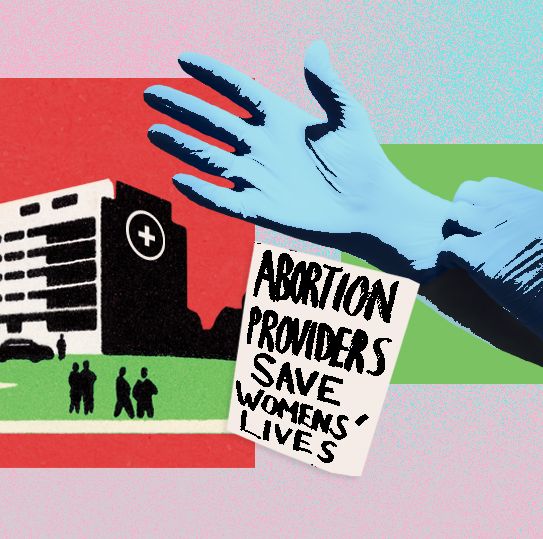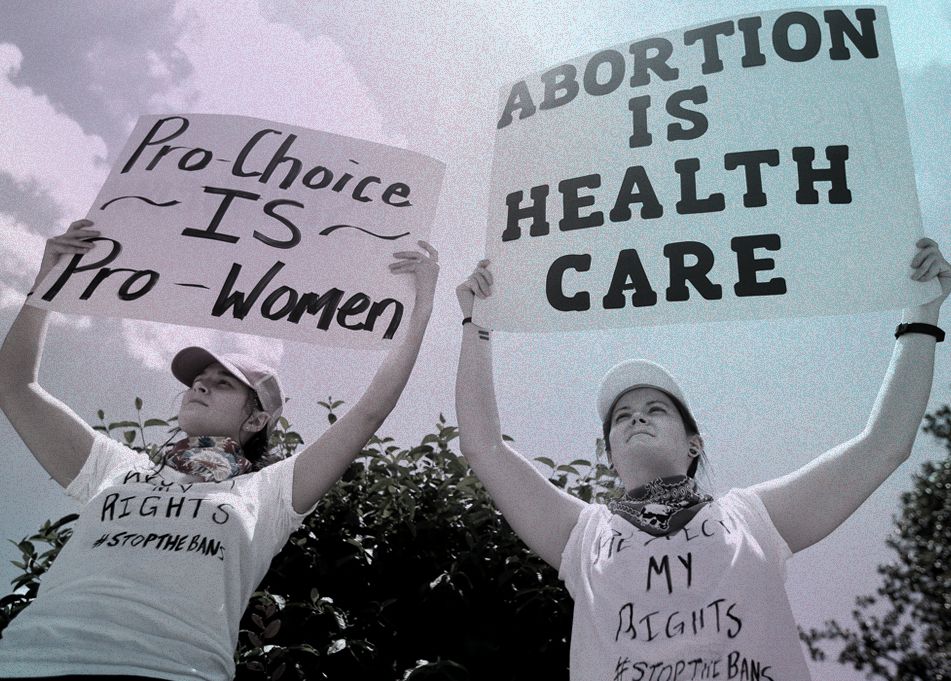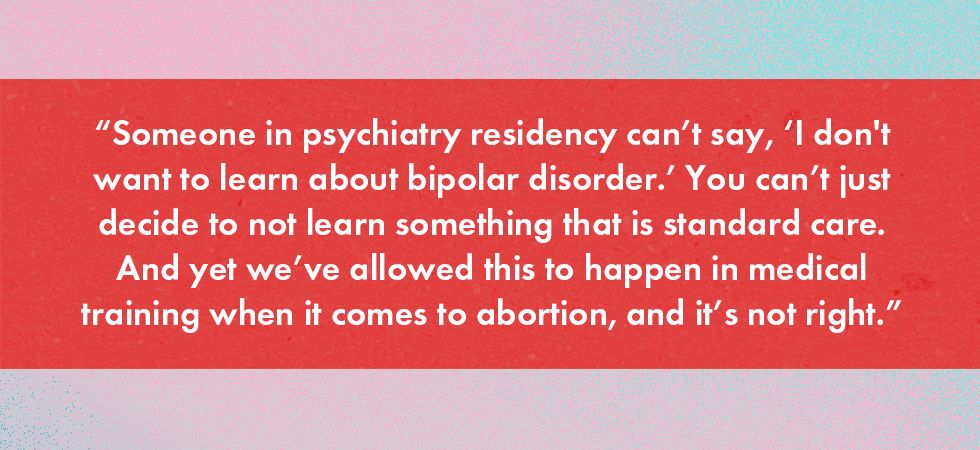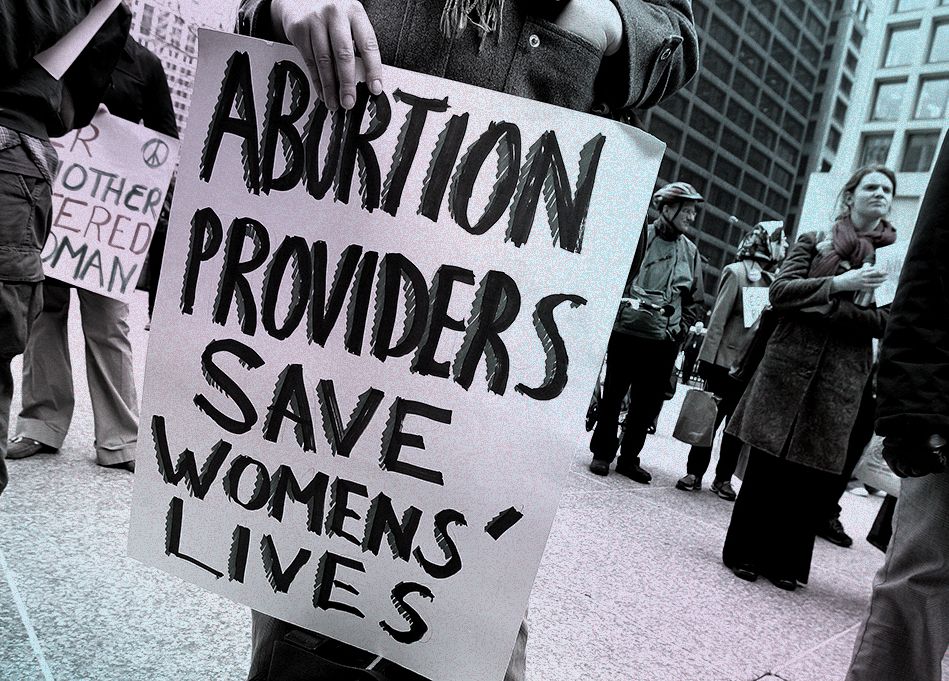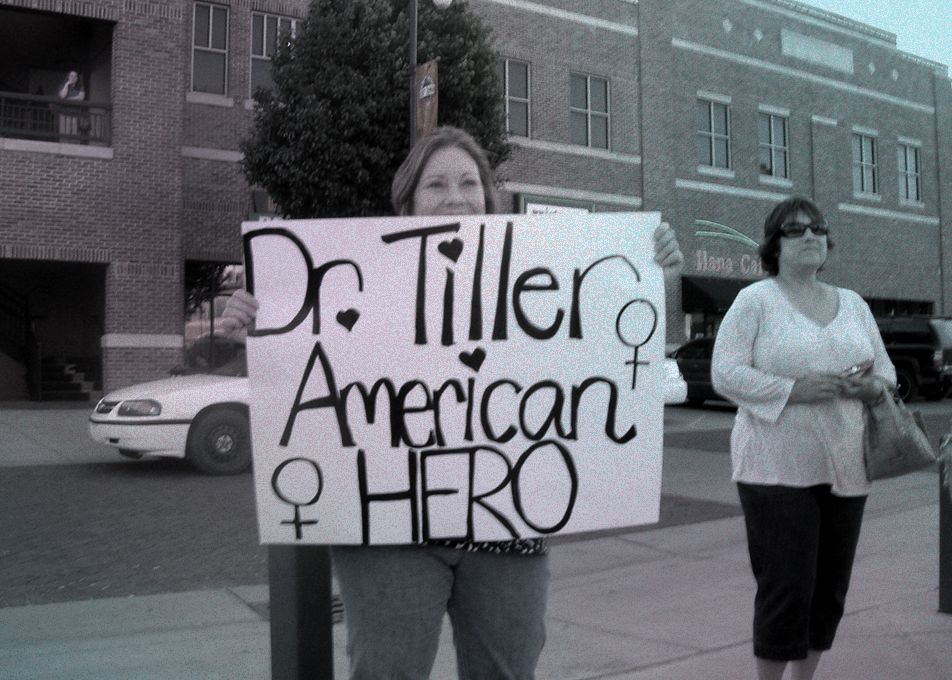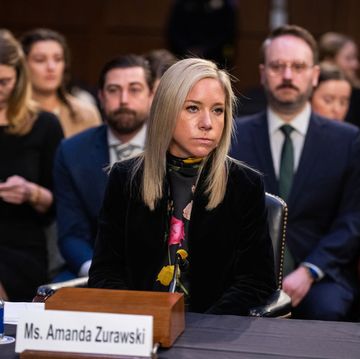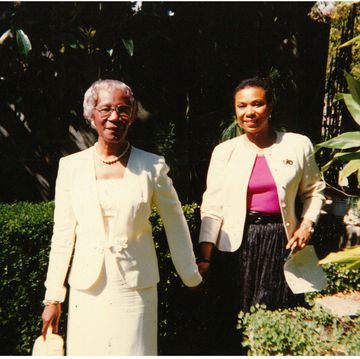On May 15, 2019, Alabama Governor Kay Ivey signed a near total abortion ban, criminalizing abortion at all stages of pregnancy with very limited exceptions. A key component of the law, which has been blocked by a federal judge, was that any doctor who performs a banned abortion in the state would be guilty of a Class A felony and could be sentenced to life in prison.
A little over a year later, Dr. Leah Torres, an OB-GYN and proud abortion provider, packed her bags and moved to Tuscaloosa, Alabama, to take over as medical director at the West Alabama Women’s Center. Torres had been recruited to work there by the Yellowhammer Fund, an abortion fund that purchased the clinic, which was otherwise facing closure due to the retirement of its longtime owner and medical director. That Torres decided to leave her job in New Mexico, a state that has some of the most liberal abortion laws in the country, and move to a heavily restrictive state, was unusual to say the least. Abortion providers are being pushed out of states like Alabama; few are moving in. “Traveling in and out is one thing,” says Torres. “But not many people are willing to move here like I did.”
Nearly 90 percent of U.S. counties currently have no abortion provider. Even in states with fewer abortion restrictions, those living in rural areas rarely have a provider in their community. According to the Guttmacher Institute, which compiles data from every known abortion provider in the U.S. including clinics, hospitals, and doctors’ offices, the number of facilities in the U.S. peaked at 2,900 in 1981; in 2017, the most recent year for which statistics are available, there were 1,587.
Many abortion clinics in the South and Midwest rely on physicians who travel in from out of state—a precarious arrangement that often means clinics can only offer abortions a few days a week or even a few days a month. The pandemic revealed the worst vulnerabilities of such a system: For seven months in 2020, South Dakota went without an abortion provider when the pandemic prevented out-of-state doctors from traveling to the state.
Some abortion providers have held their own in hostile states for decades. Take Dr. Alan Braid, the Texas OB-GYN who has been practicing for 45 years and recently defied the state’s near-total abortion ban. Doctors like Braid will need to retire eventually, but many feel they can’t as their retirement could mean the loss of a clinic. Five states have only one clinic remaining, meaning one doctor’s departure could cut off abortion access for an entire state or region. In 2020, one of Ohio’s nine abortion clinics closed due to a doctor’s retirement. A decade ago, the state had 15 abortion providers. Now it has only eight. Had Yellowhammer not purchased the Alabama clinic and recruited Torres, it, too, might have closed, leaving the state with just two clinics. “The weight of doing abortions in rural areas is falling upon the shoulders of very few people,” said Dr. Iman Alsaden, medical director of Planned Parenthood Great Plains and fellow with Physicians for Reproductive Health. “People who do family planning fellowships tend to stay in big urban academic centers because they are then training other fellows, and they want to do research.”
To truly address the abortion provider shortage, Torres said, would require a complete overhaul of the medical system. However, people need abortion providers in their communities now, and improvements in training, removal of unnecessary regulations, and stronger protections for OB-GYNs practicing in hostile states would go a long way toward meeting this need. Here’s what could help:
More doctors need to be taught to perform abortions.
The provider shortage begins with training. Less than half of medical schools offer students hands-on clinical experience with abortion. Even post-graduate training for OB-GYNs often fails to include abortion: A 2018 survey found that only 64 percent of OB-GYN residencies include routine abortion education, despite the fact that they are required to do so in order to be accredited by the American Council for Graduate Medical Education (ACGME). Students who are interested in abortion care but in residencies where such training isn’t offered often have to pursue special fellowships after they graduate. Additionally, “many state institutions have in their charters that they cannot teach about abortion and other forms of comprehensive reproductive health care,” Alsaden said. The result: Even though 97 percent of OB-GYNs in private practice say they encounter patients seeking abortion, only 14 percent offer abortion care.
Further, at least nine states have laws that prohibit government employees from providing abortions, meaning faculty at public universities and teaching hospitals can’t perform such procedures or instruct students. A 2020 study found that 57 percent of teaching hospitals, concentrated in the Midwest and South, have policies that limit abortion even beyond what state law dictates. Additionally, one in six hospital beds in the U.S. are now in Catholic hospitals, which prohibit doctors from performing nearly all abortions. And 95 percent of abortions happen in standalone clinics, while medical students and residents are typically trained in hospitals. All of these factors taken together make it difficult for doctors-in-training to get direct experience with abortion.
Alsaden said the organizations that accredit medical schools and residency programs should do more to require and standardize abortion training. “I would love to see it be more challenging to pursue a medical degree while trying to avoid abortion training than it currently is to get training in abortion,” said Pamela Merritt, executive director of Medical Students for Choice. She said accreditation standards should specify how many hours of abortion education a medical student needs. “Medical schools are part of big university systems, and accreditation can incentivize them to hold the line and flex some of their power, rather than take the path of least resistance and cave to this empowered minority that is about to make it very dangerous to be pregnant in the United States,” Merritt said. State governments can help with this, too. California, for example, has a law requiring that OB-GYN residency programs adhere to the ACGME requirements.
Additionally, medical schools and residency programs that do include abortion training usually allow students to opt out—a practice Torres said should end. “Someone in psychiatry residency can’t say, ‘I don't want to learn about bipolar disorder,’” she said. “You can’t just decide to not learn something that is standard care. And yet we’ve allowed this to happen in medical training when it comes to abortion, and it’s not right.”
Change the definition of who can be an abortion provider.
Advanced practice clinicians, or APCs, including nurse midwives, nurse practitioners, and physician assistants, have masters or doctoral degrees. They can prescribe medications, diagnose and treat illnesses, and perform examinations and medical procedures. They can also safely provide medication abortion (by pill) and aspiration abortion, a simple in-office procedure that only takes about five minutes and is highly similar to other procedures APCs do, including IUD insertion. However, 38 states have laws making it so that only physicians can provide abortions. A handful of states allow APCs to provide medication abortions, but not aspirations.
“There's been support for APCs being able to provide abortions since the mid-90s,” said Julie Jenkins, a sexual and reproductive health nurse practitioner and leader of the APC Cluster of the Reproductive Health Access Project (RHAP), a group of APCs who provide sexual and reproductive healthcare. “The American Public Health Association, American College of Obstetricians and Gynecologists, the World Health Organization—all of those folks recognize that abortion care is within our scope of practice.”
Allowing APCs to provide abortions would be especially helpful in rural areas. “We know that in rural places, APCs tend to be the primary care providers,” said Jenkins. “Doctors in general are not moving to those areas and staying there. So to improve abortion access in those communities, it would need to be the APCs that people are already seeing for their care.”
Several states—most recently New Jersey—have changed their laws to allow APCs to provide first trimester abortions. A bill called the Women’s Health Protection Act, first introduced in 2013 and reintroduced this year, would invalidate physician-only requirements and ensure all qualified health care providers can perform abortions. It would also remove medically unnecessary requirements including mandatory ultrasounds, waiting periods, and biased state-mandated counseling. The bill passed in the House of Representatives this year and is supported by President Biden, but faces an uphill battle in the Senate. (Filibuster reform would be required to secure its passage.)
The excessive regulations on medication abortions have to go.
Mifepristone, one of two drugs used for medication abortion, is regulated under an FDA program called Risk Evaluation and Mitigation Strategies, or REMS. These tight regulations disincentivize doctors from stocking abortion pills in their offices, leaving patients to seek care in abortion clinics, which may involve significant travel or harassment from anti-abortion protesters. “Part of the promise of medication abortion was that you would just be able to get it from your local provider in their office discreetly, privately,” Jenkins said. “The REMS have really wreaked havoc on that idea.”
Facing these barriers, a growing number of people are ordering pills online to self-manage their abortions outside medical settings. Before the pandemic, these orders were usually fulfilled by overseas pharmacies. However, during the pandemic, the FDA has suspended some of the REMS requirements, allowing U.S. providers to legally mail abortion pills to their patients. Now, the FDA is reviewing all of the restrictions on mifepristone and considering permanent changes. Medication abortion by mail could become a permanent option, or the REMS requirements could be removed altogether, allowing retail pharmacies to stock mifepristone. This would make it easy for nearly any doctor—or APC, in 18 states—to offer medication abortion. But medical providers will have to take the initiative to do so, said Torres, and push back against hospital and practice administrators who may not want them to offer such care.
Abortion providers need personal and professional protections.
What happened to Torres after she moved to Alabama brings up another problem: it’s really hard to be an abortion provider. In August 2020, just weeks after granting Torres a temporary medical license, the Alabama State Board of Medical Examiners suddenly revoked it and refused to give her a permanent license. Medical boards are technically nonpartisan, but their members are appointed by elected officials. In Alabama, some members are appointed by the governor and some by the lieutenant governor, both of whom are fervently anti-abortion, and some by the House of Representatives, which has an overwhelming Republican majority.
In revoking her license, Alabama’s medical board alleged that Torres lied in response to questions on the application. She says she answered truthfully, and that when asked for additional information, she provided it promptly. Torres believes she was targeted because she is an abortion provider. Due to the history of violence against abortion providers in the U.S.—another major deterrent—Torres said she’s used to managing concerns about her personal safety. But she never imagined that her integrity as a physician would be called into question. “It was not even on my radar,” she said. She fought the Board’s decision, and won, ultimately receiving a permanent license. But during the seven months of her suspension, she was unable to work in Alabama, and the Board’s action jeopardized her licenses in other states as well. While raising funds to cover over $100,000 in legal fees, Torres has also had to take on a second job as a traveling physician.
While she was unable to work, the clinic relied on other doctors who traveled in from out of state. Even that was difficult to arrange, because other physicians were afraid that what happened to Torres could happen to them. “It was a deterrent, plain and simple,” she said. “I think state medical boards probably have too much unchecked power.” The federal government could also do more to deter violence against abortion providers by reviving the underused Freedom of Access to Clinic Entrances Act, which prohibits injuring, intimidating, or interfering with abortion clinic staff.
With the Supreme Court poised to overturn or significantly weaken Roe v. Wade, it’s especially critical to take proactive steps to widen the pool of abortion providers. If abortion becomes illegal in large areas of the country, states where it remains legal will need even stronger abortion care infrastructure. “We shouldn’t have to relearn in a repressive environment that abortion is essential,” Merritt said.
For her part, now that she has an Alabama license, Torres is determined to keep providing abortions there for as long as she can. She says everything the state put her through, including the $100k she spent in legal fees, only increased her fortitude to practice there: “They’ve bought themselves a permanent abortion provider in Alabama.”
